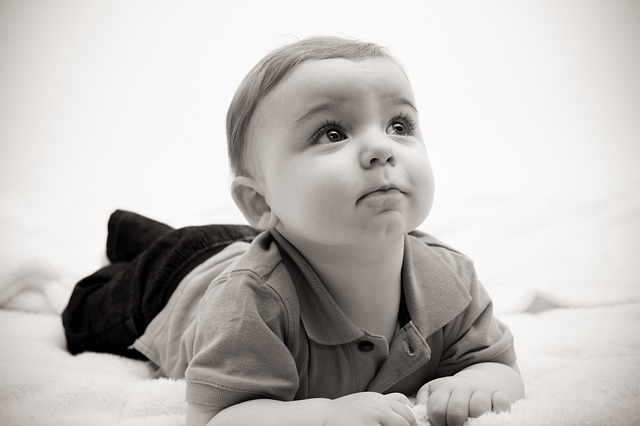|
Get Free Moving Quotes
|
|
How to Make Your New Home Baby-Proof |
|
Rating : 0.0/5
182 Views
|
|
|
|
|
|
 After moving into your new home, there's so much unpacking and organizing to do. However, if you also have a baby in tow, one of your top priorities will be ensuring your new place is a safe one. The following tips will help you baby-proof your home so your little one can begin crawling around and exploring his new surroundings in no time! After moving into your new home, there's so much unpacking and organizing to do. However, if you also have a baby in tow, one of your top priorities will be ensuring your new place is a safe one. The following tips will help you baby-proof your home so your little one can begin crawling around and exploring his new surroundings in no time!
Get on your baby's eye level
Once your baby begins crawling, anything on the floor can (and will) be placed inside her mouth. The first step in baby-proofing is to get down on your baby's level--on the floor on your hands and knees. This way, you can see all the little things you might normally miss that your baby can't resist snatching up. Keep an eye out for dangerous, protruding nail heads in wooden floorboards, wires, or any small objects that can easily fit inside her mouth. Make sure any electrical outlets within her reach are securely protected by outlet covers. When outlets are in use, be sure to keep them blocked from your baby so she cannot pull out the plugs and stick her tiny fingers inside the outlet.
Protect sharp edges and corners
If you weren't nervous enough about your crawling baby, soon he will begin to walk. Once he is attempting two-legged mobility, he will grab onto any available edges to assist in his progress. Rectangular tables in particular have very sharp edges that can be unsafe if your baby falls and hits his head or face on the table. Smoother round tables are generally safer for babies than rectangular, but you can also protect the corners using safety guards. The soft foam pieces apply easily to your table's rough edges to protect your baby's delicate head from the impact. They are also often removable and reusable. Keep in mind, the sticky adhesive could leave an unsightly residue on the surface of your table or ruin the finish.
Cover door knobs and locks
There are a variety of useful safety products on the market to prevent your baby from opening doors, pinching his fingers, or even turning the door knob. The front door, bathroom door, basement door and any sliding doors that lead outdoors should all be secured. You can even purchase an alarm to sound if baby manages to pry open a door while you are in another room.
Use safety locks on cabinets
Your baby is infinitely curious, and will get into anything within her reach. Locks to secure your cabinet doors are essential when baby-proofing your home. Your options for cabinet security include locks that drill into the cabinet door, as well as locks that attach with magnets or adhesive. If your cabinet doors contain handles, you can secure them simply with latch-like locks that loop through the handles. You should also always remove any toxic chemicals and cleaning supplies from low cabinets or from underneath the sink and stow them in high cabinets instead.
Secure your windows
When setting up your baby's nursery, make sure his crib and all other furniture is away from the windows. Never leave any windows open while your baby is unattended. You should also purchase protective window guards that fit inside the frames to keep your baby from falling out of an open window. These guards have to be drilled into the frame -- if you are looking for an alternative that will cause less permanent damage, you can opt for safety netting on the window.
Secure blinds and shades
Blinds and shades can also be unsafe. The pull cords pose a strangulation danger if your baby gets her head caught or tangled in the loop. You can install window cleats to keep the cord out of your baby's reach, or cut the looped cords and attach safety tassels at the ends.
Block stairways
One of the most necessary purchases you will make when baby-proofing your home is a baby gate. These helpful blockades are essential to restrict your baby's play and crawling to her designated safe spots. There are two types of gates -- hardware gates and pressure gates. Hardware gates are safer, more secure, and more permanent--they are installed by drilling them into the wall. A pressure gate can be moved from room to room, and is adequate when blocking your baby level ground. However, when used at the top of a staircase, the gate could become unsecured under baby's weight and come loose.
|
| |